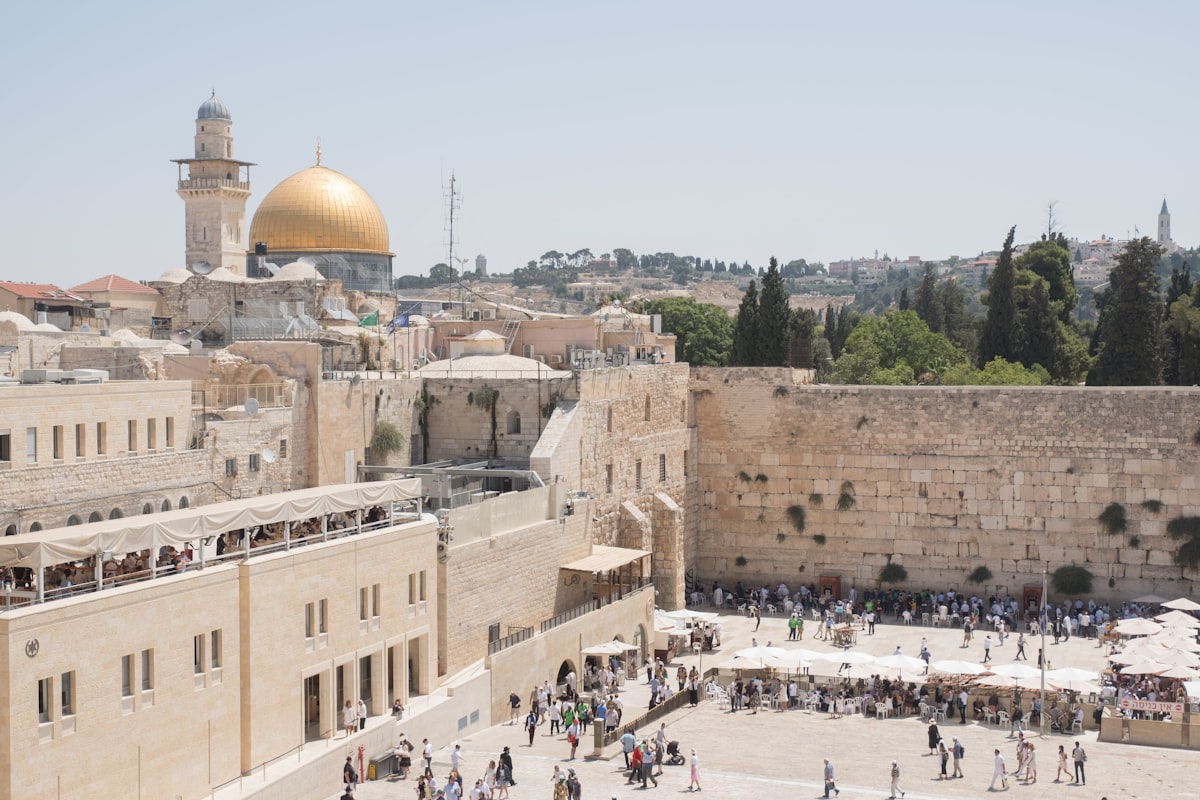Political and Religious Background of the New Testament
Answers to common questions asked about the political and religious background of the New Testament.

1. What is the significance of the following events or books for the New Testament?
- Assyrian exile of Israel (northern kingdom): The northern kingdom of Israel had fallen to the Assyrians in 722 BC as recorded in 2 Kings 24:12. This was a precursor to the fall of the southern kingdom which ushered the Babylonian Period.
- Babylonian exile of Judah (southern kingdom): The southern kingdom was occupied and conquered by Nebuchadnezzar around 605 BC. The higher class Jews were deported to Babylon. The exile of Judah dissolved the monarchy, destroyed the temple, and reduced the proximity between Jews and Gentiles. (1) The lost of the temple prompted the establishment of synagogues. Another result was (2) the Jews' permanent renunciation of idolatry. (3) Aramaic, the language of commerce in the Babylonian Empire, replaced ancient Hebrew as the basic language of Palestine.
- Book of Malachi: Malachi is the final book written in the Old Testament. There will be no "prophetic voice in Israel" until the ministry of John the Baptist, predicted by Malachi.
- Conquests of Alexander the Great: The Greek period (331–167 BC) which follows the Persian Period (539–331 BC) began with Alexander the Great's successful conquests over Persian much of the world. This introduced the "enculturation" or Hellenization of the world including Palestine. The Greek language and culture permeated the lives of those living in Palestine up and including the time of the New Testament period.
2. Which two Greek houses were in charge of Palestine from 320–167 BC?
Two Greek houses battled over control of the area of Palestine. They were the Ptolemies and the Seleucids.
3. Who was the Greek ruler who erected a statue of Zeus in the Jerusalem temple, and when did this event take place?
Antiochus IV, who called himself "Epiphanes" and implying he was the incarnation of Zeus on earth, erected a statue of Zeus in the Jerusalem temple and sacrificed a pig on the altar. This event occurred around 186 BC.
4. What was the name of the Jewish party supportive of the Maccabees?
The Essenes were a group of pious and zealous Jews who participated with the Maccabees in a revolt against the Seleucids but later rejected the Maccabean corruption of the Jerusalem priesthood and temple system. [1]
5. What was the name of the dynasty following the Maccabees?
The Maccabees (167–135 BC) were followed by the Hasmonean dynasty (135–63 BC).
6. Which two parties divided from the Hasidim?
The Hasidim, a pious Jewish group that had initially been supportive of the Hasmoneans, eventually turned against them. They split into two main groups: the Pharisees, who remained in Jerusalem; and the Essenes, who withdrew and most likely produced the Qumran sectarian literature known oas the Dead Sea Scrolls.[2]
7. What are the years of rule for the following key Roman emperors?
- Augustus: 31 BC to AD 14. Roman poet Virgil called this the "Golden Age" of Rome.
- Tiberius: AD 14–37. He reigned during the lifetimes of John the Baptist and Jesus. (Luke 3:1)
- Nero: AD 54–68. He was the perpetrator of atrocious acts against Christians and responsible for the fire of Rome in the year 64.
- Domitian or Domitianus: AD 81–96. He raigned when the book of Revelation was likely written.
8. When did the Romans destroy the Jerusalem temple?
The Romans destroyed the Jerusalem temple in the year AD 70.
9. Who were Herod the Great's three sons who ruled over parts of Palestine, and which were the provinces or regions they ruled?
- Archelaus was appointed ethnarch over Judea, Samaria, and Idumea which included Jerusalem.
- Philip was made tetrach over Iturea and Trachonitis (areas northeast of the Sea of Galilee).
- Herod Antipas was made tetrach over Galilee and Perea in 4 BC.
10. What are the names of at least five apocryphal books, five pseudepigraphal books, and three writing of the Qumran literature (Dead Sea Scrolls)?
Apocrypha
- 1 and 2 Esdras, Tobit, Judith, Additions to Esther, Wisdom of Solomon, Sirach (Ecclesiasticus), Baruch, Epistle of Jeremiah, Prayer of Azariah and the Song of the Three Young Men, Susanna, Bel and the Dragon, Prayer of Manasseh, 1 and 2 Maccabees.
Pseudepigrapha (selected)
- 1 and 2 Enoch, 2 and 3 Baruch, Sibylline Oracles, Testaments of the Twelve Patriarchs, Assumption of Moses, Martyrdom and Ascension of Isaiah, Jubilees, Psalms of Solomon, Letter of Aristeas, Joseph and Aseneth, 3 and 4 Maccabees.
Qumran Literature (DSS)
- CD (Damascus or Zadokite document)
- 1QS (community Rule or Manual of Discipline)
- 1QM (War Scroll)
- 11QTemple (Temple Scroll)
- 1QpHab (Habakkuk pesher and other pesharim or commentaries)
11. What were the four major Jewish sects active in first-century Judaism?
- Pharisees: Most likely originated from the God-fearing Hasidim, who practice a form of righteousness that observed a complex system of oral traditions in an effort to flesh out the implication of scriptural commands for everyday life. They believed in the resurrection and in angels (Acts 23:8).
- Sadducees: They traced their beginnings back to the Hasmonean period. They were the ruling aristocracy in Jerusalem, and they had a vested interest in maintaining the status quo. They held a majority on the Sanhedrin (the Jewish ruling council). They accepted only the Torah as Scripture, denied the future resurrection, and eschewed a belief in angels. (Acts 23:8)
- Essenes: Most likely originated with the Hasidim, from whom they later separated. They were a group of pious and zealous Jews who particpated with the Maccabees in a revolt against the Seleucids but later rejected the Maccabean corruption of the Jerusalem priesthood and temple system. They engaged in teh study of Scripture, ritual baths and washings, and worship liturgy. Some refrained from marriage. The Essenes are not mentioned in the NT.
- Zealots: They were first attested during the reign of Herod the Great (6 BC) and ceased to exist after the fall of Masada in AD 73. They resisted the foreign occupation of Palestine by the Romans and opposed taxes to pagan emperors. One of Jesus's followers was Simon the Zealot (Matt 10:4).
12. What was the name of the Jewish ruling council?
The Sanhedrin was "the Jewish supreme council in all religious and political matters." It consisted of seventy members based on Moses' precedent set in Exodus 18. While Palestine was ruled by the Roman governor who reported to the emperor in Rome, the Jews enjoyed a considerable degree of religious and political autonomy in Jesus's day.




